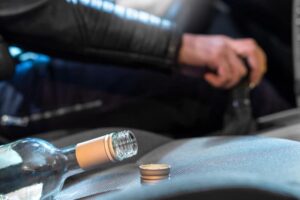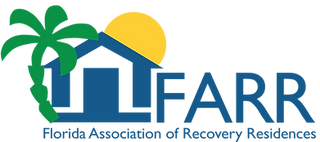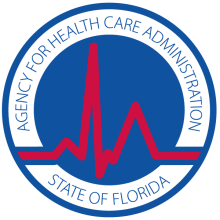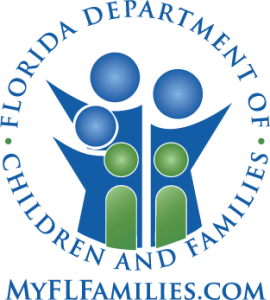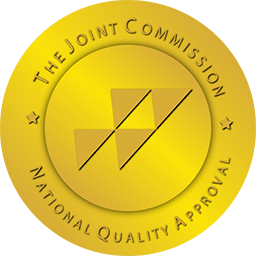Choosing a drug rehab program for yourself or a loved one is never an easy task. It often comes at a very stressful time when the disease has become so out of control that intervention is wanted—now. Googling “drug rehab in Florida” turns up thousands of results. With so much else going on due to the progression of the disease, the process can feel overwhelming.
The good news? It doesn’t have to be this way. At Transitions Recovery Program, we’re here to help connect you with the right program for you. If it’s not us, we’ll let you know. If it is—then we’ll be happy to add you to our extended recovery family. Give us a call at 800-626-1980 or read on to learn the 7 steps that go into choosing the right substance abuse treatment program for you or your loved one in Florida.
Step 1: Choose Your Level of Care

First thing’s first: you need to determine your appropriate level of care. There are many different types of treatment programs depending on the nature and severity of your disease. A good intake counselor will walk you through choosing the right level of care, so if you’re not sure what you need, just ask. SAMHSA defines five levels of treatment:
- Inpatient Treatment: This is the highest level of care. Inpatient addiction treatment usually refers to detox centers in hospitals or drug rehab facilities, where patients are monitored for life-threatening complications during the initial detox period. This is particularly important for those detoxing from heavy long-term alcohol abuse, where the health risks are significant.
- Residential Treatment: At a residential treatment program, patients live on-site and participate in a highly regimented daily schedule of counseling, group therapy, and sober life skills education. These programs typically range from 30 to 90 days in length, although some are longer.
- Partial Hospitalization or Day Treatment: These programs require daily attendance at a program site and a 4-8 hour per day time commitment, but the patient lives off-site, usually at home. Day Treatment is considered a step down from Residential Treatment.
- Outpatient and Intensive Outpatient Programs: Outpatient programs are similar to Day Treatment programs in that the patient continues to live at home, but they are less intense in terms of time commitment. Some Outpatient programs only require attendance several times a week, allowing patients to continue their regular work and family schedules. Intensive Outpatient Rehab Programs typically require a 9-20 hour per week time commitment.
- Medication-Assisted Treatment Programs: Generally, MAT programs refer to the treatment of opioid use disorder with methadone or suboxone, although there are MAT options for alcohol abuse. A MAT patient will visit a clinic once a day to receive their daily dose of medication and participate in short counseling and education sessions. MAT is considered a maintenance program and is usually recommended after another type of treatment has been completed.
Step 2: Decide if You Need Dual Diagnosis Support
 Dual diagnosis or “co-occurring disorders” refers to a patient who has both Substance Use Disorder and another mental health condition, such as depression, anxiety, or bipolar disorder. For these patients, having both conditions addressed simultaneously is paramount. Very often the conditions influence one another and without addressing both at once there is a much higher likelihood of relapse after treatment.
Dual diagnosis or “co-occurring disorders” refers to a patient who has both Substance Use Disorder and another mental health condition, such as depression, anxiety, or bipolar disorder. For these patients, having both conditions addressed simultaneously is paramount. Very often the conditions influence one another and without addressing both at once there is a much higher likelihood of relapse after treatment.
Not all centers are equipped to treat dual diagnosis patients. If you think that you may be suffering from co-occurring disorders, make sure the drug rehab you choose has mental health professionals on staff who specialize in treating dual diagnosis patients.
Step 3: Choose a Location That is Conducive to Recovery for You
 The choice of location for an addiction treatment program is a highly personal one. Some people prefer to be close to home with friends and family nearby to lend support while others find that traveling to a location far away from home is a better choice. For those that travel, a change of scenery (and distance from negative influences) can make all the difference in their recovery journey.
The choice of location for an addiction treatment program is a highly personal one. Some people prefer to be close to home with friends and family nearby to lend support while others find that traveling to a location far away from home is a better choice. For those that travel, a change of scenery (and distance from negative influences) can make all the difference in their recovery journey.
At Transitions Recovery Program, we think that North Miami Beach, Florida is a beautiful and restful place to get sober. Our private gated community has fully furnished two-bedroom, two-bath apartments with on-site staff ready to provide support and mentorship around the clock.
Step 4: Look for Accreditations
 Don’t trust unaccredited addiction treatment centers with your health. Make sure that the center of your choice is accredited by several legitimate organizations.
Don’t trust unaccredited addiction treatment centers with your health. Make sure that the center of your choice is accredited by several legitimate organizations.
For example, Transitions Recovery Program boasts Gold Seal of Approval from the Joint Commission on Accreditation of Healthcare Organizations (JCAHO), as well as recognition from Florida’s Agency for Health Care Administration, and the Florida Department of Children and Families.
Step 5: Check That the Drug Rehab Center Will Take Your Insurance
Drug rehab isn’t cheap, but with new ACA rules all health insurers are required to cover more than ever before. Medicare, Medicaid, and most private insurers cover treatment for chemical dependency.
Call the center of your choice and see if they accept your insurance plan. Ask about financial assistance outside of your insurance plan. You’ll also want to contact your insurer to ask about co-pays and see if you have a deductible. If you do you’ll want to know how much more money you need to contribute until your deductible is met for the year. All of these factors will help determine your out-of-pocket expenses, if any, for addiction treatment.
Step 6: Determine if You Want Family Support
For those with strong family ties, family involvement in treatment is critical to maintaining sobriety and mending relationships strained by addiction. If you want to involve your family in your treatment, make sure that the center of your choice has programs in place to support you in that endeavor.
At Transitions Recovery Program, we are proud of our Family Support program. We host Family Support Group nights in addition to large Family Group Meetings every Saturday morning, where we feature lectures, films, experiential exercises, and safe-space sharing.
Step 7: Analyze Specialty Programs for a Good Fit
Consider the specialty programs available at the center of your choice and assess them for a good fit with your personal preferences. Don’t underestimate how important it is to tailor your recovery program to suit your particular needs.
At Transitions Recovery Program, we offer daily meditation and weekly yoga in addition to a sparkling swimming pool. Our gym, tennis courts, and volleyball courts encourage patients to get back into their body and enjoy a healthy lifestyle.
Choosing the Best Drug Rehab in Florida For You is Easy When You Know What to Look For
As you compare addiction treatment programs, keep these 7 steps in mind. Again, if you need help determining if Transitions Recovery Program is right for you or your loved one, don’t hesitate to reach out and call us at 800-626-1980. If we can’t help, we’ll connect you with a provider that can.
This content was written by addiction treatment specialist Erin Gilday.









